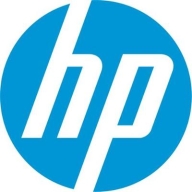

HP Wolf Security and Trend Vision One compete in the cybersecurity solutions category. Trend Vision One appears superior based on its advanced features, whereas HP Wolf Security is favored for its competitive pricing and supportive customer service.
Features: HP Wolf Security provides robust hardware-enforced endpoint protection with a focus on threat isolation using its micro-virtual machine strategy. It emphasizes securing endpoints by isolating threats, ensuring minimal exposure to malware. Trend Vision One excels with comprehensive threat detection, offering features such as extended detection and response (XDR) capabilities and integrated threat intelligence for enhanced visibility across environments. It provides cross-layer analytics, enabling more efficient identification and response to threats.
Room for Improvement: HP Wolf Security could enhance its capabilities by increasing integration options with other security tools and systems. Improving scalability to accommodate larger, more complex environments would be beneficial. Although support is strong, expanding advanced features could enhance their offering. Trend Vision One could improve by simplifying the initial technical setup, requiring less technical expertise. It might also benefit from improved customer support responsiveness. Additionally, while its features are comprehensive, refining user-friendliness can facilitate wider adoption without demanding extensive training.
Ease of Deployment and Customer Service: HP Wolf Security is praised for its easy deployment and high-quality customer service, which reduces complexity in managing security protocols. It offers a straightforward setup with minimal technical requirements, making management easier for clients. On the other hand, Trend Vision One offers satisfactory deployment options aimed at integrating extensively into existing systems. It requires more technical involvement during initialization but excels in providing flexibility and comprehensive management post-deployment, reducing complexity over time.
Pricing and ROI: HP Wolf Security is recognized for competitive pricing, offering better initial costs and tangible ROI due to cost savings on potential security breaches. Initial setup costs are lower, making it attractive for organizations seeking cost-effective solutions. Trend Vision One requires a higher initial investment, offset by its potential for long-term savings through its expansive threat management capabilities. It promises greater value over time, particularly for businesses prioritizing comprehensive threat protection and management capabilities.
| Product | Market Share (%) |
|---|---|
| Trend Vision One | 2.5% |
| HP Wolf Security | 2.7% |
| Other | 94.8% |

| Company Size | Count |
|---|---|
| Small Business | 3 |
| Large Enterprise | 5 |
| Company Size | Count |
|---|---|
| Small Business | 39 |
| Midsize Enterprise | 11 |
| Large Enterprise | 34 |
HP Wolf Security is a comprehensive cybersecurity solution that bolsters your organization's cyber-resilience on multiple fronts. With its full-stack security approach, it ensures layered protection from hardware to the cloud, providing a robust defense against cyber threats. HP Wolf Security introduces endpoint isolation, a cutting-edge feature that effectively halts threats that may go unnoticed by Next-Generation Antivirus (NGAV) and Endpoint Detection and Response (EDR) systems. Moreover, it extends its security coverage to printers, equipping them with advanced detection and self-healing capabilities to further safeguard your digital ecosystem. This integrated solution streamlines IT and security risk management, resulting in fewer alerts and false positives, and reduces the time and effort required for endpoint incident analysis and remediation. Notably, HP Wolf Security prioritizes productivity, allowing you to manage risk without disrupting the user experience, enabling worry-free work from anywhere, and offering rapid IT disaster recovery at scale.
Trend Vision One offers comprehensive protection for endpoints, networks, and email with centralized visibility. It is valued for its attack surface management, real-time threat detection, integrated management, ease of deployment, and user-friendly interface.
Trend Vision One provides a sophisticated security platform combining endpoint, network, and email protection with features like virtual patching and advanced AI capabilities. Its centralized management and integration with platforms like Office 365 and Azure make it an attractive option for organizations needing streamlined workflows and efficient risk management. While it boasts robust integrations and ease of use, enhancements are needed in reporting, tool integration, and reducing false positives. Users call for better support infrastructure, faster response times, and improved threat intelligence capabilities. Despite some complexity, its AI and ML features significantly enhance threat detection and response.
What Features Define Trend Vision One?
What Benefits Should Users Look For?
Trend Vision One is implemented in industries that require endpoint protection, ransomware defense, and incident response, being flexible for both on-premises and cloud environments. It is used to monitor servers, networks, and endpoints, providing features like email protection, behavioral detection, and threat visibility. Organizations benefit from AI and ML, improving their security posture and response capabilities.
We monitor all Endpoint Detection and Response (EDR) reviews to prevent fraudulent reviews and keep review quality high. We do not post reviews by company employees or direct competitors. We validate each review for authenticity via cross-reference with LinkedIn, and personal follow-up with the reviewer when necessary.